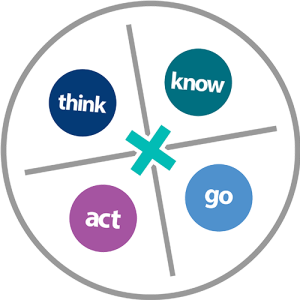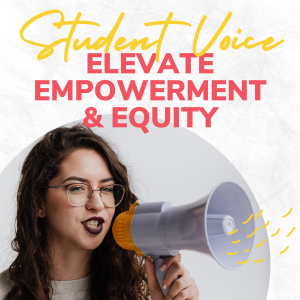[vc_row][vc_column][vc_column_text]Organizing learning around student ownership doesn’t mean letting students decide all that happens in the classroom. It does mean providing them the opportunity to decide what success looks like for them. And structuring assignments and classwork so students have openings to making school relevant to their vision of success.[/vc_column_text][vc_column_text]Here are five quick tips for educators from our latest Portico webinar. Keep these in mind as you organize learning for student ownership.[/vc_column_text][info_list style=”circle with_bg” icon_color=”#00bcb4″ font_size_icon=”18″ eg_br_width=”1″ connector_color=”#555759″][info_list_item list_title=”Let students define the criteria for success in alignment with their goals.” icon_type=”custom” icon_img=”id^44625|url^https://inflexion.org/wp-content/uploads/2020/01/circle-1-for-web.png|caption^null|alt^null|title^circle 1 for web|description^null”]This allows learning experiences to be relevant, both culturally and in terms of kids’ future plans.[/info_list_item][info_list_item list_title=”Make students decision-makers when it comes to designing workflows and timelines and milestones.” icon_type=”custom” icon_img=”id^44624|url^https://inflexion.org/wp-content/uploads/2020/01/circle-2-for-web.png|caption^null|alt^null|title^circle 2 for web|description^null”][/info_list_item][info_list_item list_title=”Bring mistake-making and uncertainty (“we don’t have all the answers”) into instruction.” icon_type=”custom” icon_img=”id^44626|url^https://inflexion.org/wp-content/uploads/2020/01/circle-3-for-web.png|caption^null|alt^null|title^circle 3 for web|description^null”]This creates an environment where taking both risks and responsibility are practiced and normalized. It helps marginalized students who often feel a lot more pressure to not make mistakes, since failure can make them feel like they don’t fit or don’t belong or aren’t capable.[/info_list_item][info_list_item list_title=”Create opportunities for students to teach or lead in class.” icon_type=”custom” icon_img=”id^45064|url^https://inflexion.org/wp-content/uploads/2020/09/circle-4-for-web.png|caption^null|alt^null|title^circle 4 for web|description^null”]Feeling autonomous, actually having volition in what they’re doing, is key to motivating students and to academic success.[/info_list_item][info_list_item list_title=”Encourage students to share their work, to put themselves out there for all to see.” icon_type=”custom” icon_img=”id^45065|url^https://inflexion.org/wp-content/uploads/2020/09/circle-5-for-web.png|caption^null|alt^null|title^circle 5 for web|description^null”]A key part of ownership of learning is shared vulnerability. It’s powerful in both student-to-teacher and student-to-student relationship building.[/info_list_item][/info_list][vc_column_text]See more about student ownership of learning in our video series, featuring Desiree Kiesel, Principal of Woodburn Arts and Communications Academy, and Ross Anderson, Principal Researcher at Inflexion. Through the MakeSPACE project they partner to foster ownership of learning in the classroom. This initiative enhances the creative resources of K-12 educators and facilitates innovative arts integration strategies for creative engagement in student learning.[/vc_column_text][ultimate_spacer height=”24″][vc_video link=”https://youtu.be/WECbj3dGqig” el_width=”80″ align=”center”][/vc_column][/vc_row]
5 Quick Tips for Educators on Organizing Learning for Student Ownership
March 9, 2021

Share:
Related Posts:

How To Build a Culture of Mind, Heart, and Spirit: 4 Ways Leaders Can Support Their Team & School
March 17, 2023Embedding school identity in instruction, setting positive expectations, and embracing meaningful change are just some of the educational practices Angela…
Structures that Elevate Student Voice in Equitable Ways: Empowering Students While They Develop Life Skills
March 5, 2023Carmen Gelman, Director of Professional Development at COSA, is all about student voice and equity. She joined Portico for a Crowdsource…
Reinforce Your School’s Identity to Launch The New Year With Momentum
February 28, 2023We had the pleasure of hosting a Crowdsource webinar with Courtney Spelber from the Huntington Beach Union High School District…



